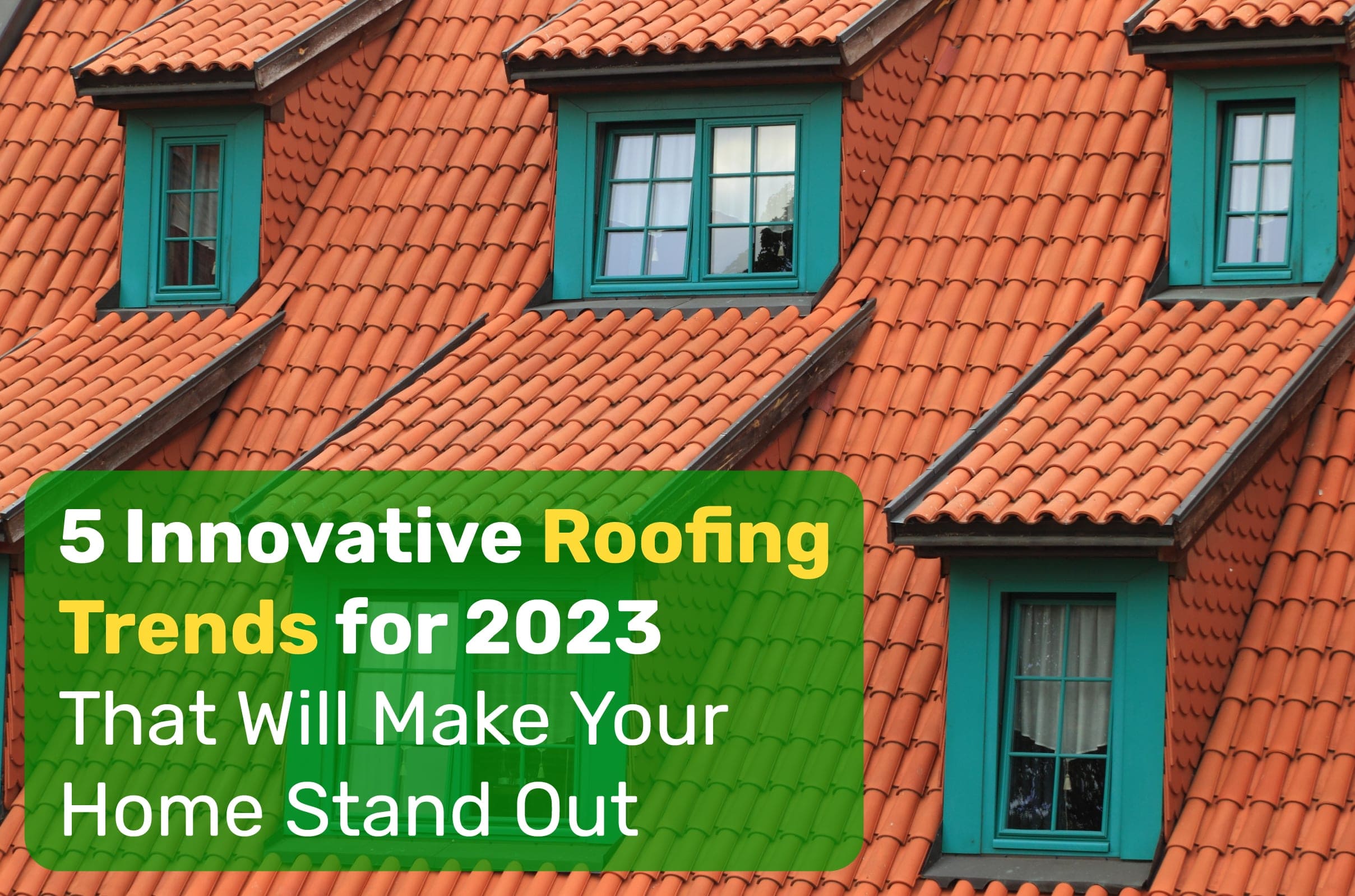As we progress into 2023, homeowners are continuously seeking ways to reduce their carbon footprint and incorporate sustainable practices into their homes. One of the ways to achieve this is by getting a LEED-certified roof. LEED (Leadership in Energy and Environmental Design) provides a set of standards for environmentally sustainable construction and design. A LEED-certified roof can be made of sustainable materials, is energy-efficient, reduces water usage and requires minimal maintenance.
The insulation of roofs helps in reducing energy bills, increases comfort in the home by reducing noise pollution, and reduces the need for heating and cooling systems. Green roofs, which involve covering a roof with vegetation and soil, not only add an aesthetic value to a home but are environmentally sustainable. They provide natural insulation and can improve air quality by capturing pollutants and carbon dioxide in the air. Additionally, the use of solar panels, geo-thermal heating or cooling systems, and rainwater harvesting systems on roofs is becoming increasingly popular as they make homes more sustainable and offer significant cost savings over the long term.
1. Get a LEED-certified roof
In recent years, there has been a growing trend towards sustainable living, and roofing is no exception. As more and more people become aware of the importance of reducing their carbon footprint, they are looking for ways to make their homes more environmentally friendly. One way to achieve this is by installing a LEED-certified roof.
LEED (Leadership in Energy and Environmental Design) is a certification program that was created by the US Green Building Council. It provides a set of standards for environmentally sustainable construction and design. To achieve a LEED certification, a building must meet a set of criteria in categories such as energy efficiency, water conservation, and materials selection.
A LEED-certified roof is a roof that meets these standards. This means that it has been designed to be energy-efficient, to reduce water usage, and to be made from sustainable materials. LEED-certified roofs can be made from a variety of materials, including metal, clay, and concrete. These roofs are designed to be long-lasting, reducing the need for repairs or replacements, and they can even help to reduce energy bills.
There are several benefits to installing a LEED-certified roof. Firstly, it can help to reduce your home’s carbon footprint. By using sustainable materials and reducing energy consumption, you can help to reduce your impact on the environment. Secondly, LEED-certified roofs are often more durable and require less maintenance than traditional roofs, saving you money in the long run. Finally, a LEED-certified roof can increase the value of your home, as it is seen as an investment in sustainable living.
In conclusion, if you’re looking for an innovative roofing trend that will make your home stand out in 2023, a LEED-certified roof is an excellent choice. Not only does it provide environmental benefits, but it also offers financial and aesthetic advantages. So, consider installing a LEED-certified roof for your home in the coming year.
2. Insulate your roof to save energy and improve comfort and health
As energy prices continue to rise, homeowners are always looking for ways to save on their energy bills. One way to do that is by insulating your roof. Roof insulation has many benefits, including energy savings, improved comfort, and better health.
When your roof is not insulated, heat escapes from your home in the winter and enters your home in the summer. This means that you need to use more energy to heat or cool your home, which leads to higher energy bills. Insulating your roof can reduce heat transfer and help you save up to 20% on your energy bills.
Insulating your roof also improves comfort in your home. In the winter, insulation keeps your home warmer and more comfortable, while in the summer, it keeps your home cooler. This means that you can maintain a more comfortable temperature in your home without having to constantly adjust your thermostat. Insulation also reduces noise pollution, making your home more peaceful and quiet.
3. Invest in green roofs
As climate change continues to be a growing concern, more and more homeowners are looking for ways to incorporate environmentally sustainable practices into their homes. One way to do so is by investing in a green roof. This innovative roofing trend involves covering a roof with vegetation and soil to create a natural habitat and reduce the carbon footprint of a home.
Green roofs have been around for centuries, but have gained more popularity in recent years due to their energy efficiency benefits. They provide natural insulation that helps regulate the temperature in the home, reducing the need for heating and cooling systems, ultimately saving homeowners money on energy bills.
Moreover, green roofs are known to improve air quality by capturing pollutants and carbon dioxide in the air. The vegetation acts as a natural filter, cleaning the air and releasing oxygen, which helps improve the overall health of those living in the home. The vegetation also helps reduce noise pollution by absorbing sound waves, creating a quieter living environment.
In addition to their environmental benefits, green roofs can also add aesthetic value to a home. They provide a natural and beautiful look, making the roof an attractive feature that can increase the value of the home. The vegetation can also create a natural habitat for birds and insects, contributing to the biodiversity of the area.
It is worth noting that green roofs require specific expertise in their installation and maintenance, as well as appropriate structural support to handle the added weight of the soil and vegetation. However, with proper installation and maintenance, green roofs can last for decades and provide numerous benefits for homeowners and the environment.
4. Install solar panels, geo-thermal systems, or rainwater harvesting on your roof.
As people become more aware of the importance of reducing their carbon footprint and conserving resources, the use of solar panels, geo-thermal heating or cooling systems, and rainwater harvesting systems on roofs is becoming increasingly popular. These innovative technologies not only make homes more sustainable but also offer significant cost savings over the long term.
Solar panels are one of the most popular green technologies used on roofs. They convert sunlight into electricity and can power anything from small appliances to an entire home. Solar panels can be installed on almost any type of roof, and they can last up to 30 years with minimal maintenance. In addition, many governments offer tax credits or other incentives for homeowners who install solar panels, making them an even more attractive option.
Geo-thermal heating or cooling systems use the temperature of the earth to regulate a home’s temperature. A series of pipes is installed under the ground and connected to a heat pump that circulates the air through the pipes. The ground temperature is generally more consistent than the air temperature, which means that geothermal systems can provide consistent heating or cooling throughout the year. While the initial cost of installing a geothermal system can be high, it can lead to significant energy savings over the long term.
Rainwater harvesting systems are another innovative technology that can be installed on roofs. These systems collect rainwater from the roof and store it in a tank for later use. The collected water can be used for irrigation, flushing toilets, and even for drinking if it is properly treated. Rainwater harvesting systems can help reduce a home’s dependence on municipal water systems, which can be costly and use a significant amount of energy to treat and distribute water.
5. Install cool roofs that mimic nature’s colors and textures
As the world continues to focus on climate change and environmental concerns, the use of cool roofs is becoming more popular. Cool roofs are designed to reflect sunlight and absorb less heat than traditional roofs, which can help reduce the amount of energy needed to cool a building. In addition to the energy savings, cool roofs also have other benefits, including mimicking nature’s colors and textures.
One of the key benefits of using cool roofs is their ability to mimic the colors and textures found in nature. Many cool roof materials are designed to look like natural materials such as stone, wood, or clay. This can help a building blend in with its surroundings and create a more harmonious environment. By choosing a cool roof that mimics nature, you can also create a more aesthetically pleasing home that stands out in your neighborhood.
Another advantage of cool roofs is their ability to reduce the urban heat island effect. This phenomenon occurs when urban areas become significantly warmer than surrounding rural areas due to the abundance of dark, heat-absorbing surfaces. Cool roofs can help mitigate this effect by reflecting sunlight and reducing the amount of heat absorbed by buildings. By reducing the amount of heat absorbed by buildings, cool roofs can also help reduce the amount of energy needed to cool a building, which can result in lower energy bills and a reduced carbon footprint.
There are many types of cool roofs available on the market, including metal roofs, clay and concrete tiles, and asphalt shingles. When selecting a cool roof, it’s important to choose a material that is appropriate for your climate, as well as your home’s style and design.
Conclusion
As we enter 2023, homeowners are increasingly seeking ways to make their homes more environmentally sustainable. This conclusion presents four roofing trends that can help homeowners reduce their carbon footprint and increase energy efficiency while saving money in the long run. Firstly, getting a LEED-certified roof provides a set of standards for environmentally sustainable construction and design. LEED-certified roofs are made of sustainable materials, energy-efficient, reduce water usage, require minimal maintenance, and can increase the value of a home. Secondly, insulating roofs helps to reduce energy bills, increases comfort in the home, and reduces the need for heating and cooling systems. Thirdly, investing in green roofs involves covering a roof with vegetation and soil, creating a natural habitat, reducing the carbon footprint, providing natural insulation, improving air quality, and adding aesthetic value to the home. Lastly, installing solar panels, geo-thermal heating or cooling systems, and rainwater harvesting systems on roofs helps to make homes more sustainable and offers significant cost savings over the long term.
In conclusion, the roofing trends presented in this conclusion provide practical and cost-effective ways for homeowners to make their homes more environmentally sustainable. As the importance of reducing our carbon footprint and conserving resources becomes more evident, these trends offer an innovative approach to meeting the sustainability goals. By adopting these trends, homeowners can save money on energy bills, increase the value of their homes, and contribute to a more sustainable future. As the world continues to tackle the challenges of climate change, it is important to embrace sustainable practices that promote responsible and sustainable living.



